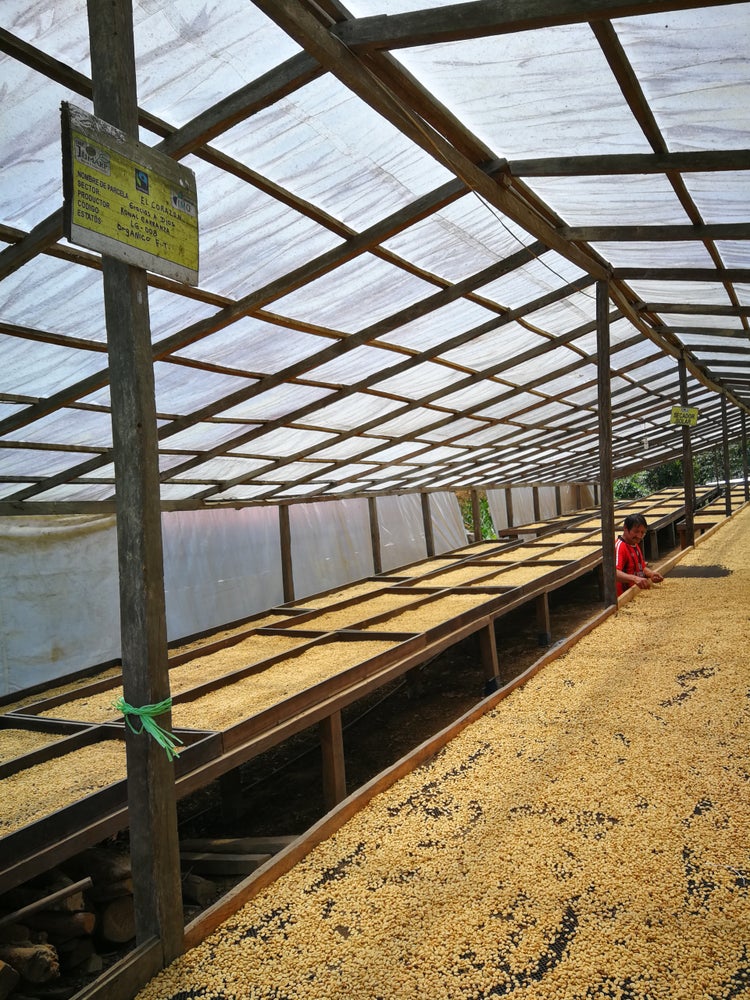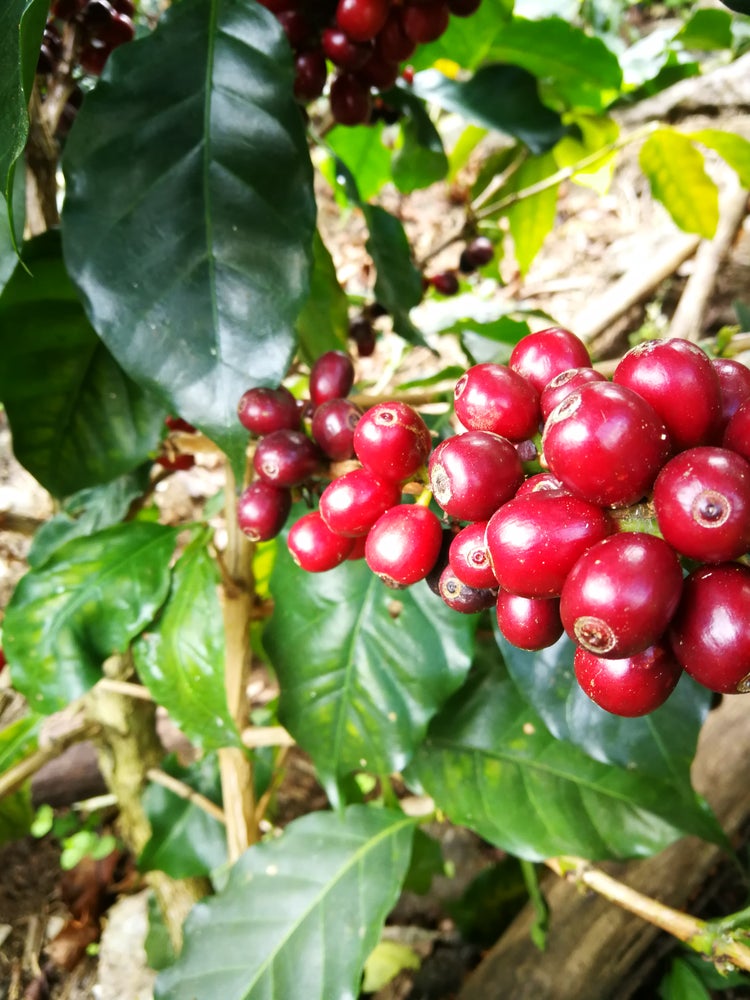About This Coffee
The Asociación de Productores Cafetaleros Juan Marco "El Palto" – in short, JUMARP – was founded in 2003 by José Carranza Barboza and 35 other smallholder farmers. The association was born out of a desire to develop a new, producer-focused model for growing and exporting coffee.
Cultivation
All 188 members produce certified organic and Fairtrade coffee. The cooperative invests the premiums received from these certifications in a number of important community projects, including crop renovations, a fund for education programs and the construction of schools.
We’re proud to support their carbon capture agroforestry project. Working with 3 other cooperatives and Café Selva Norte, JUMARP members use sustainable agroforestry techniques to protect the environment while improving coffee quality and yield.
Their ambitious quality improvement program launched in 2012 and was completed in 2021. Funded by Fairtrade and Organic premiums as well as through government funding and member contributions, the program helped successfully raise general overall cup scores to 83-84. To achieve this, they built drying houses, manual pulpers and fermentation tanks at all member farms and helped members plant higher quality varieties.
Harvest & Post-Harvest
Across Peru, most smallholder producers use a similar household-based model of production. Farm sizes are small, and most families pitch in together to contribute the work needed – from pruning to weeding to fertilizing - to bring in a successful coffee harvest.
During the harvest season, coffee is selectively handpicked. This labor-intensive process usually involves the entire family. Some larger farms may hire local day laborers to help with the harvest.
After harvesting, cherry is often hand-sorted to remove damaged or underripe cherries and is sometimes (depending on the family’s processing setup) floated in buckets or plastic vats to remove underweights. After sorting, the cherry is pulped. Most families have a mechanical or manual drum pulper located on their farm, usually close to the house.
Once pulped, coffee is fermented in a tank for at least 18 and up to 40 hours, depending on the climate (higher altitudes often require longer fermentation times due to cooler air temperatures). After fermenting, parchment is washed in clean water.
Drying infrastructure varies greatly in Peru. Some farmers use covered raised beds and others have a ‘carpa solar’ – a raised drying room, often above a storage shed or even their home.
Parchment will dry for around 20 days on average and, no matter the drying method, will be turned regularly to ensure even drying.
Coffee in Peru
Peru holds exceptional promise as a producer of high-quality coffees. The country is the largest exporter of organic Arabica coffee globally. With extremely high altitudes and fertile soils, the country’s smallholder farmers also produce some stunning specialty coffees.
Though coffee arrived in Peru in the 1700s, very little coffee was exported until the late 1800s. Until that point, most coffee produced in Peru was consumed locally. When coffee leaf rust hit Indonesia in the late 1800s, a country central to European coffee imports at the time, Europeans began searching elsewhere for their fix. Peru was a perfect option.
Between the late 1800s and the first World War, European interests invested significant resources into coffee production in Peru. However, with the advent of the two World Wars, England and other European powers became weakened and took a less colonialist perspective. When the British and other European land owners left, their land was purchased by the government and redistributed to locals. The Peruvian government repurchased the 2 million hectares previously granted to England and distributed the lands to thousands of local farmers. Many of these farmers later grew coffee on the lands they received.
Today, Peruvian coffee growers are overwhelmingly small scale. Farmers in Peru usually process their coffee on their own farms. Most coffee is Fully washed. Cherry is usually pulped, fermented and dried in the sun on raised beds or drying sheds. Drying greenhouses and parabolic beds are becoming more common as farmers pivot towards specialty markets.
After drying, coffee will then be sold in parchment to the cooperative. Producers who are not members of a cooperative will usually sell to a middleman.
The remoteness of farms combined with their small size means that producers need either middlemen or cooperatives to help get their coffee to market. Cooperative membership protects farmers greatly from exploitation and can make a huge difference to income from coffee. Nonetheless, currently only around 15-25% of smallholder farmers have joined a coop group.

